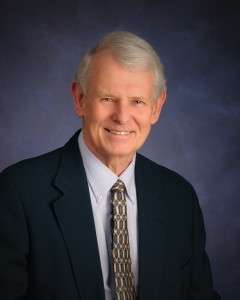By John McClaughry
In this election season almost every candidate is promising to deliver “more affordable health care!” Most of them are at least subconsciously thinking “I’ll support legislation to have the government compel somebody else to pay more of your health care costs. That “somebody else” includes, variously, the taxpayers, your employer, others in your insurance pool and the providers themselves.”
Let’s ask this question: “Where can I get more affordable prices for high quality medical services, at a facility that does a lot of the procedure I require, gets above average results, and knows how to cope with every complication?” Let’s focus on commonplace coronary artery bypass graft surgery (CABG), as opposed to continuing treatment for chronic conditions, and let’s compare the quoted all-in bundled price (not including post-operational physical therapy sessions).
According to one not atypical 2018 survey, your U.S. CABG operation will cost $123,000 on average, or in the best case as little as $80,000 if you negotiate payment in cash.

John McClaughry is vice president of the Ethan Allen Institute.
Now look at Surgery Center of Oklahoma, which pioneered the bundled price. You can get your CABG done there by experts for $12,000. That’s mainly because Surgery Center of Oklahoma specializes in a small number of types of operations, keeps overhead low, takes only cash payments, and practices low markup on pharmaceuticals. That’s impressive. Of course you have to fly to Oklahoma City and back, and do your post-op recovery back home.
Now let’s look at the bundled price of the same procedure at a medical center that does thousands of that procedure, with British and U.S. board-certified surgeons. Let’s go on past Thailand and Singapore to the world’s extreme example: Narayana Institute of Cardiac Sciences in Bengaloru, in India’s Silicon Valley, the flagship of a group of 23 Indian private medical centers.
At Narayana you can get your arteries repaired for $2,000. A lung transplant is yours for $7,000, and a heart transplant for $11,000. And this is not a back-alley discount operation. Its glistening modern equipment is maintained to world standards. Narayana’s coronary artery bypass fatality rate within 30 days is 1.4%. The U.S. average is 1.9%.
Its founder, Dr. Devi Shetty, got his surgical training at Guy’s Hospital, London, and was the doctor for Mother Teresa. His son Viren (34, Stanford Business School) heads the world class data management operation. It’s designed to identify unproductive effort and inflated costs, which are eliminated.
Instead of throwing away tubes, they are sterilized and reused. An in-house equipment repair team keeps CT and MRI machines in use long after their warranties expire, when many U.S hospitals send for new ones. Perhaps most important, the staff is “upskilled” — everyone performs at the highest level of their capabilities. Thus junior surgeons do patient prep and open the chest. A senior surgeon comes in, installs the graft, and moves on to another operating room leaving the juniors to sew up.
Narayana’s cost-cutting business model is designed for high throughput, with a low margin per operation. Practiced turnaround teams clean, sterilize, recondition and reequip the operating rooms for their next patients in 15 minutes. For the more affluent inpatient, the hospital offers a premium package: private rooms and, for a measly $5 US per hour extra, amenities akin to the first class section on an airplane.
Narayana is one of many private hospitals in India. It makes a profit because of its low prices and efficiency, high volume, good results, largely cash operation, and relative freedom from India’s notorious British-created bureaucracies. As a specialty surgical hospital it does not offer care by primary care physicians, who generally work in clinics funded and controlled by the government.
Narayana’s wages are of course at Indian levels, not American. Its model can’t be packed up and dropped into New England (although it operates a clone in the Cayman Islands catering to North Americans.) And the two 22-hour flights between New York and Bengaloru will set you and your companion back $10,000.
Just the same, like the Surgery Center of Oklahoma, Narayana offers an impressive example of how an entrepreneurial surgical hospital can deliver high quality services at strikingly low prices. American hospitals should emulate Narayan’s model, although American government regulations to protect the many interests within our health care systems would likely eat up a lot of the potential savings.
John McClaughry is vice president of the Ethan Allen Institute.



I can imagine they aren’t spending what we do up here on schools either- and clearly they can do Math pretty darn well.
We don’t realize how screwed we are getting until we see articles like this.
No wonder everyone up here is broke. We are being robbed every which way to Sunday.
In the article John mentions keeping overhead low at the Surgery Center of Oklahoma and Narayana’s cost-cutting business model.
A commitment to cost control, a business concept that we really don’t hear coming from the Vermont medical community. If they’re doing it, they’re keeping it a secret as it doesn’t show up in the numbers at a level necessary to keep cost increases at the rate of inflation or lower.
Until the concept and need for real cost control is embraced by medical facility leaders and embedded in the industry culture, the conversation of a lack of affordability will continue forward on an upward slope.
McClaughry does it again!
However, his last paragraph does not go far enough in challenging Vermont hospitals, clinics and doctors to come up with a comparable model for the State of Vermont. Vermont could be the epicenter of a whole new health care alternative and also provide after care for thousands of patients to recuperate here at resort facilities. Let’s get those hospital administrators to work devising a system to be envied in the western world!
Well done, well done.